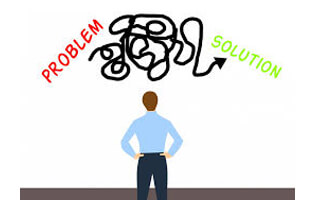
Q: Why doesn’t the Lithium Polymer Battery Pack Be Recharged?
Q: Why doesn’t the Lithium Polymer Battery Pack Work?
When the lithium polymer battery pack is charged, it can be divided into the following reasons: the charger is reversed, or the charger is faulty; the protection board protection is not restored, or the protection board is defective; the lithium polymer battery pack is disconnected from the external use of the appliance.
For the above-mentioned unfavorable phenomena, look for the reasons in turn. Whether the charger is connected reversely, whether the positive and negative poles of the lithium polymer battery pack are connected reversely; re-enable the appliance to release the protection board protection, measure whether the protection board MOS tube has driving voltage; find out whether the wiring connection is loose or disconnect.
Q: Why isn’t the Lithium Polymer Battery Pack Fully Charged
The lithium polymer battery pack don’t usually work when it is used. There are several reasons: the voltage is at a low level, the protection board is protected, or the controller is protected; the protection board or the controller is damaged; the discharge positive and negative poles are reversed; the line is disconnected, or the switch is not on.
The above problems can be solved by charging the battery pack, check the protection board, or connecting the line.
Q: Why is the Lithium Polymer Battery Pack Working Time shorter than before?
A: During the recycling process, the lithium polymer battery pack stops when it is charged without the overall cut-off voltage of the battery pack. This situation is caused by the inconsistency of the battery pack’s single-string power or capacity. The high-capacity or low-capacity first charge is protected by the protection board so that the other strings of battery power are not fully charged to stop the charging process.
In this case, the lithium polymer battery pack can be recharged by the equalization charger so that the voltage of each string is consistent. If the capacity difference is significant, the battery with a significant difference must be replaced. But the most important thing is that the battery must be tested for capacity and divide capacity before assembly. Otherwise, it will be trouble to have a single string and re-disassemble.
Q: Why is the Lithium Polymer Battery Pack at Lower Voltage?
When the lithium polymer battery pack is used, it will be discharged quickly. The reasons for this are: the battery is not fully charged; the single-string voltage capacity difference is significant; the battery pack is short-circuited or the battery pack self-discharge, causing the battery pack to be fully charged when it was consumed.
For the above defects, the battery pack can be recharged or replaced with a bad battery.
Q: Why does Lithium Polymer Battery Pack Cause High Temperature?
The whole set of the voltage of the battery pack is only half of the nominal voltage or negative voltage. This situation usually occurs when the battery pack is just assembled. The reason is that the battery pack is misconnected. The positive and negative poles are reversed, or the individual batteries are not fully connected. After the battery pack is fully charged, it is normal, but it is left standing or low voltage immediately after using it for a period. This may be due to the large self-discharge of the battery or the micro-short circuit of the battery pack.
A nominal low or negative voltage must be rewired correctly. In the event of a low voltage at full charge, a bad battery must be replaced.



